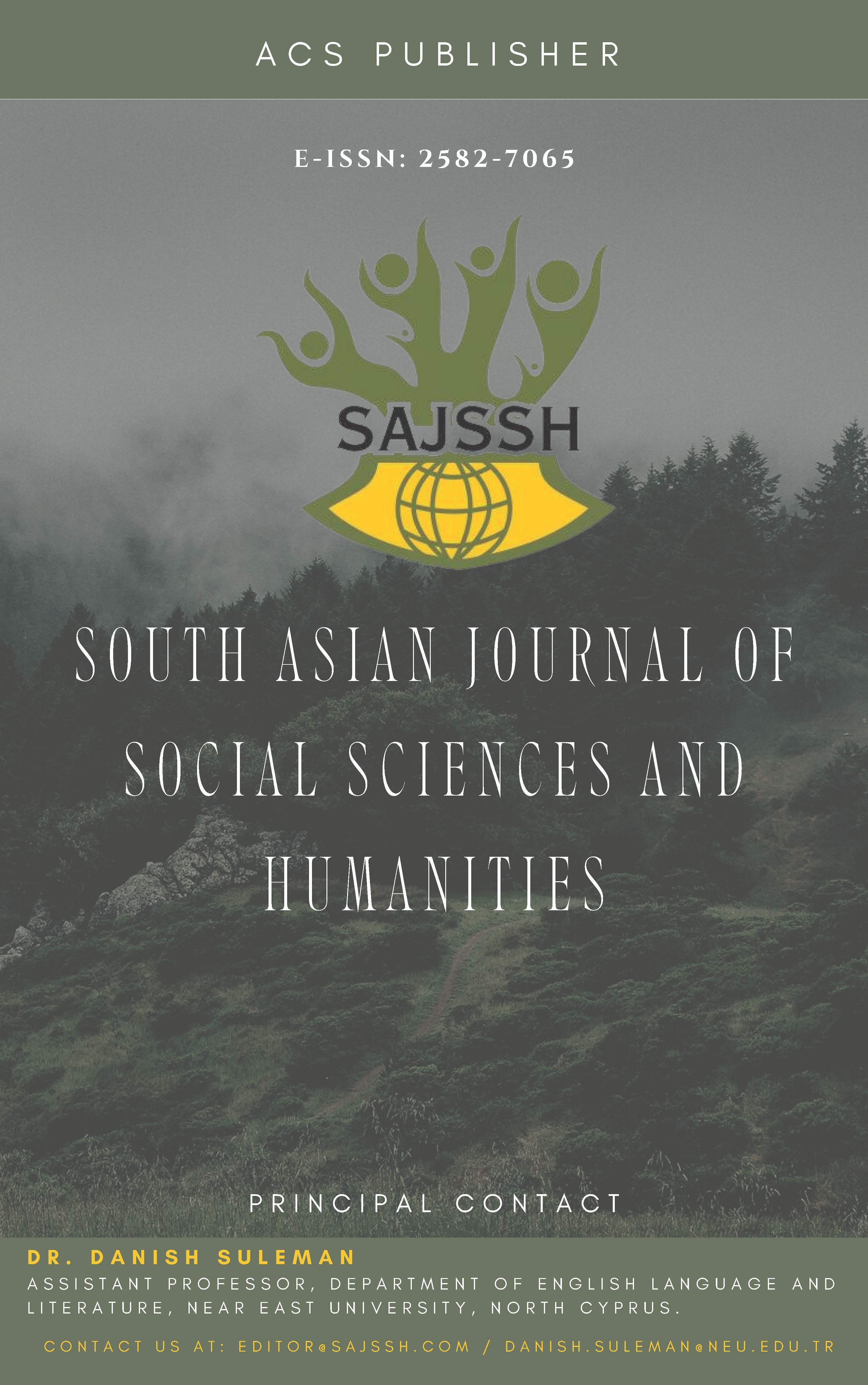Evaluating the Long-Run Dynamics of Inflation, Unemployment, and Exchange Rates on Economic Growth: An Econometric Analysis of Time Series Data from Bangladesh with Verification of Okun’s Law
DOI:
https://doi.org/10.48165/sajssh.2024.6305Keywords:
RGDP, Exchange Rate, Unemployment Rate, Inflation Rate, ADF, Co-integration, VECM, Impulse ResponseAbstract
The foreign exchange rate, jobless rate, rate of inflation, and real GDP have always been considered to be the most burning issues for the world. This study seeks to analyze the effects of exchange rates, unemployment rates, and price levels on real GDP from 1991 to 2023, utilizing time series statistical methods. The research utilized sophisticated econometric techniques to analyze the findings. The series' stationary properties were initially assessed using the Augmented Dickey-Fuller unit root test. The Johansen co-integration approach determines the variables' long-term relationship. Granger casualty test was used to determine factor causal linkages. The empirical findings from the cointegration test indicate that, over the long term, both the exchange rate and the inflation rate exert a significant positive influence on the real gross domestic product (RGDP) in Bangladesh. On the contrary, the unemployment rate adversely affects real Gross Domestic Product (RGDP) in Bangladesh, this signifies that why Okun’s Law has the existence in Bangladesh. The findings from the vector error correction model (VECM) suggest that inflation and unemployment are expected to reach equilibrium following a period of error correction; however, the exchange rate and real GDP show minimal significant adjustment towards achieving long-run equilibrium. The results of the Granger test indicate a bilateral causal relationship between unemployment and the exchange rate. The findings derived from the impulse response function show that in a very few cases the external shocks have been neutralized for a certain period of time but in most cases the external shocks have not been neutralized.
References
Alam, J., Nur Alam, Q., & Hoque, M. T. (2020, October 6). Impact of GDP, Inflation, Population Growth and FDI on Unemployment: A Study on Bangladesh Economy. Social Science Research Network. https://ssrn.com/abstract=3860663
Alhabees, Mahmoud & Abu Rumman, Mohammed A. (2012). The Relationship Between Unemployment and Economic Growth in Jordan and Some Arab Countries. 18. 10.5829/idosi.wasj.2012.18.05.16712.
Akter, N. (2018). Unemployment Problem in Bangladesh and Its Impact on Economic Growth.
AHIAKPOR, J. C. W. (2009). THE PHILLIPS CURVE ANALYSIS: AN ILLUSTRATION OF THE CLASSICAL FORCED-SAVING DOCTRINE. Journal of the History of Economic Thought, 31(2), 143–160. doi:10.1017/S1053837209090166
Aina Zabri, & Abu. (2022). THE RELATIONSHIP AMONG GDP, INFLATION, UNEMPLOYMENT AND EXCHANGE RATE IN MALAYSIA: A Vector Error Correction Model (VECM) Approach. 8th Annual ECOFI Symposium 2022.
Bakhshi, Z., & Ebrahimi, M. (2016). The effect of real exchange rate on unemployment. ProQuest, 4–13. https://doi.org/10.19237/MBR.2016.01.01
Cashell, W. B. (2004). Inflation and unemployment: What is the connection? Federal Publications. Swedish Economic Policy Review 7 (2000) 107-153
Hossain, S. (2022, June 8). Unemployment problem of Bangladesh. ResearchGate; unknown. https://www.researchgate.net/publication/361176371_Unemployment_problem_of_B angladesh
Islam, M. S., & Muhammed Sahajalal. (2019, June 12). An empirical study of GDP, exchange rate, inflation and unemployment in Bangladesh. ResearchGate; unknown. https://www.researchgate.net/publication/333719132_An_empirical_study_of_GDP_ exchange_rate_inflation_and_unemployment_in_Bangladesh
Kamal Uddin, K. M. REASONS FOR GRADUATE UNEMPLOYMENT AND ITS IMPACT ON ECONOMIC GROWTH IN BANGLADESH
Pascual, K. C. A., Dionisio, C. P., & Capulla, R. (2020). The relationship of real Gross Domestic Product (GDP), inflation, and unemployment in the Philippines (1970- 2011). International Journal of Research Studies in Education, 9(2). https://doi.org/10.5861/ijrse.2020.5804
Rahman, M., Farooq, M. O., & Selim, M. (2021). Mitigating educated youth unemployment in Bangladesh. The Journal of Developing Areas, 55(1).
Shrikant Krupasindhu Panigrahi, Noor Azlinna Azizan, Shahryar Sorooshian, & Prabha Thoudam. (2020, June 30). EFFECTS OF INFLATION, INTEREST AND UNEMPLOYMENT RATES ON ECONOMIC GROWTH: EVIDENCE FROM ASEAN COUNTRIES.
Sahin, D. (2016). Determinants of Unemployment: Empirical Analysis for China. The Journal of Academic Social Science, 4(22): 50-58.
Udo, M. Z., & GAYOVWI, Goodnews Oghenekaro. (2019). The impact of unemployment and inflation on economic growth in Nigeria. Ambrose Alli University Journal of Banking and Finance 3 (2), 51, 78. https://www.researchgate.net/publication/363320753
Downloads
Published
Issue
Section
License
Copyright (c) 2025 South Asian Journal of Social Sciences and Humanities

This work is licensed under a Creative Commons Attribution 4.0 International License.





